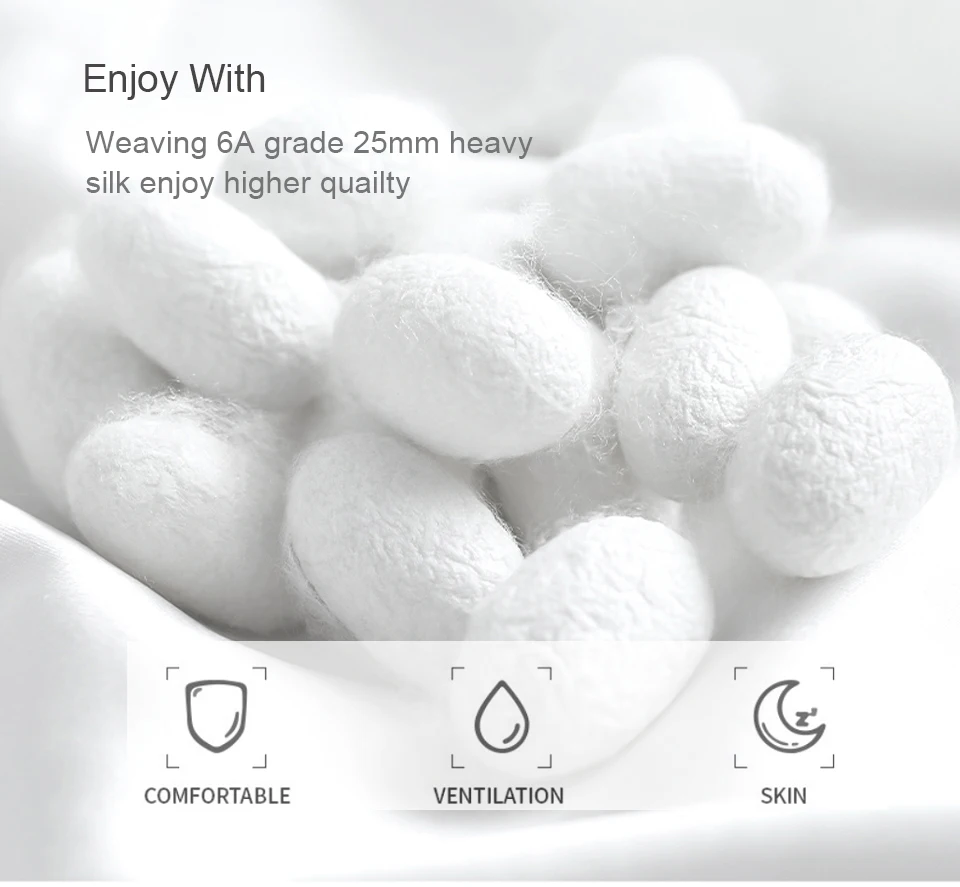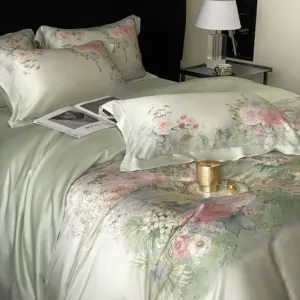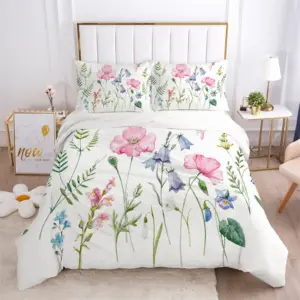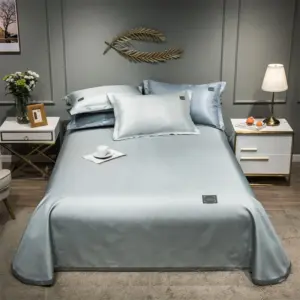Understanding the Luxury of Silk Bedding
Silk bedding represents the pinnacle of sleeping luxury, transforming an ordinary bedroom into a haven of comfort and elegance. Unlike standard cotton or synthetic materials, silk offers an unparalleled combination of benefits that make proper layering both essential and rewarding.
What makes silk truly exceptional for bedding is its remarkable natural properties:
- Temperature regulation: Silk naturally maintains your body temperature within 1-2°F of ideal sleeping conditions, keeping you cool in summer and warm in winter
- Breathability: The fabric allows air to circulate freely while wicking moisture away from your body
- Hypoallergenic nature: Silk resists dust mites, mold, and other common allergens
- Gentle on skin and hair: The smooth surface reduces friction that causes bedhead and sleep wrinkles
Understanding how to properly layer silk bedding is both an art form and a science. When done correctly, layering enhances silk’s natural benefits while creating a visually stunning bed that rivals luxury hotel aesthetics. The smooth texture and natural sheen of silk create different layering challenges and opportunities compared to conventional fabrics.
Throughout this guide, you’ll discover expert techniques for creating the perfect silk bedding sanctuary, from foundation layers to seasonal adaptations and styling approaches. The amazing benefits of Mulberry silk sheets extend far beyond simple luxury—they create an environment perfectly suited to restorative sleep.
The Science Behind Silk’s Bedding Properties
To truly appreciate the art of silk layering, understanding the science behind this extraordinary fabric is essential. Silk’s exceptional bedding properties stem from its unique molecular structure and natural composition.
Molecular Marvel: Why Silk Regulates Temperature
Silk fibers consist of protein structures arranged in a crystalline pattern that creates microscopic air pockets. These pockets trap air and create natural insulation that adapts to your body’s needs. This explains why Mulberry silk’s special properties include keeping you comfortable across different temperatures.
Unlike synthetic materials that often trap heat, silk’s thermal conductivity actively helps regulate body temperature. The fabric’s natural proteins adjust to environmental conditions, drawing excess heat away from the body when you’re warm and providing insulation when you’re cool. This makes silk uniquely suited for year-round comfort.
Breathability Metrics
Silk’s breathability surpasses most bedding materials, with remarkable moisture-wicking capabilities. The fabric can absorb up to 30% of its weight in moisture without feeling damp against your skin. This natural wicking property helps maintain dry, comfortable sleep conditions.
The thermal properties of silk bedding contribute significantly to its performance as a layering material. With air permeability measurements exceeding many synthetic alternatives, silk allows continuous airflow throughout the night, preventing the stuffy feeling common with less breathable fabrics.
Momme Weight: The Silk Quality Indicator
When layering silk bedding, understanding momme weight—the fabric density measurement unique to silk—becomes crucial. Premium bedding typically falls within the 19-25 momme range, striking the perfect balance between durability and luxurious drape. Higher momme counts indicate more silk per square inch, resulting in greater durability and a more substantial feel.
Mulberry Silk vs. Other Silk Types for Bedding
Not all silk is created equal when it comes to bedding applications. Understanding the differences between silk varieties helps inform better layering decisions.
| Silk Type | Source | Characteristics | Best For |
|---|---|---|---|
| Mulberry | Bombyx mori silkworms fed mulberry leaves | Finest, smoothest fibers; uniform color; highest durability | Luxury bedding, direct skin contact |
| Tussah | Wild silkworms with varied diet | Coarser texture; natural color variations; less uniform | Decorative elements, outer layers |
| Habotai | Domesticated silkworms | Lightweight; less durable; more affordable | Temporary bedding, guest rooms |
Mulberry silk bedding sets offer superior longevity and comfort compared to other varieties. The smoothness of Mulberry silk creates a frictionless surface ideal for the base layers that contact your skin directly. Its naturally long fibers result in stronger fabric that maintains its integrity through proper washing and care.
Quality silk displays several identifying characteristics: a subtle, natural sheen (rather than artificial shininess), cool touch against the skin, and appropriate weight for its intended use. When examining silk bedding, look for tight, even weaving patterns and consistent color throughout.
Understanding Silk Weaves and Their Impact on Comfort
The weaving technique used in silk fabric production significantly influences how your bedding performs in a layered arrangement. Common silk weaves include:
Charmeuse: The most popular weave for bedding, with a smooth, satin-like face and slightly textured reverse. Its lustrous surface glides against skin while providing excellent drape for layering.
Habotai: A lightweight, plain weave with a soft hand feel. Though less durable than charmeuse, it creates excellent breathable summer layers.
Silk Satin: Features longer thread floats for maximum smoothness and sheen, though with slightly less durability than charmeuse.
The weave pattern directly affects how sheets drape over your mattress and interact with additional layers. Charmeuse typically offers the best balance for core bedding layers, while lighter weaves may work best for summer arrangements where minimal layering is desired.
Essential Foundation for Silk Bedding Layers
Creating the perfect silk bedding experience begins with establishing the proper foundation. Unlike cotton or synthetic materials, silk’s natural slipperiness requires special attention to the base layers of your bed.
Start by ensuring your mattress surface is clean and free from irregularities that might damage delicate silk fibers. A quality mattress pad creates an ideal buffer between your mattress and silk sheets, while providing additional comfort and protection.
For optimal silk bedding performance, follow these foundation steps:
- Begin with a freshly vacuumed mattress to remove dust and debris
- Apply a breathable, natural fiber mattress protector
- Add a smooth, thin mattress pad if desired for extra cushioning
- Ensure all foundation layers are wrinkle-free and securely fitted
Addressing foundation issues early prevents frustrating problems later. Common challenges include silk sheets sliding off smooth mattress surfaces and bunching that creates uncomfortable pressure points. The right foundation creates stability while preserving silk’s luxurious feel.
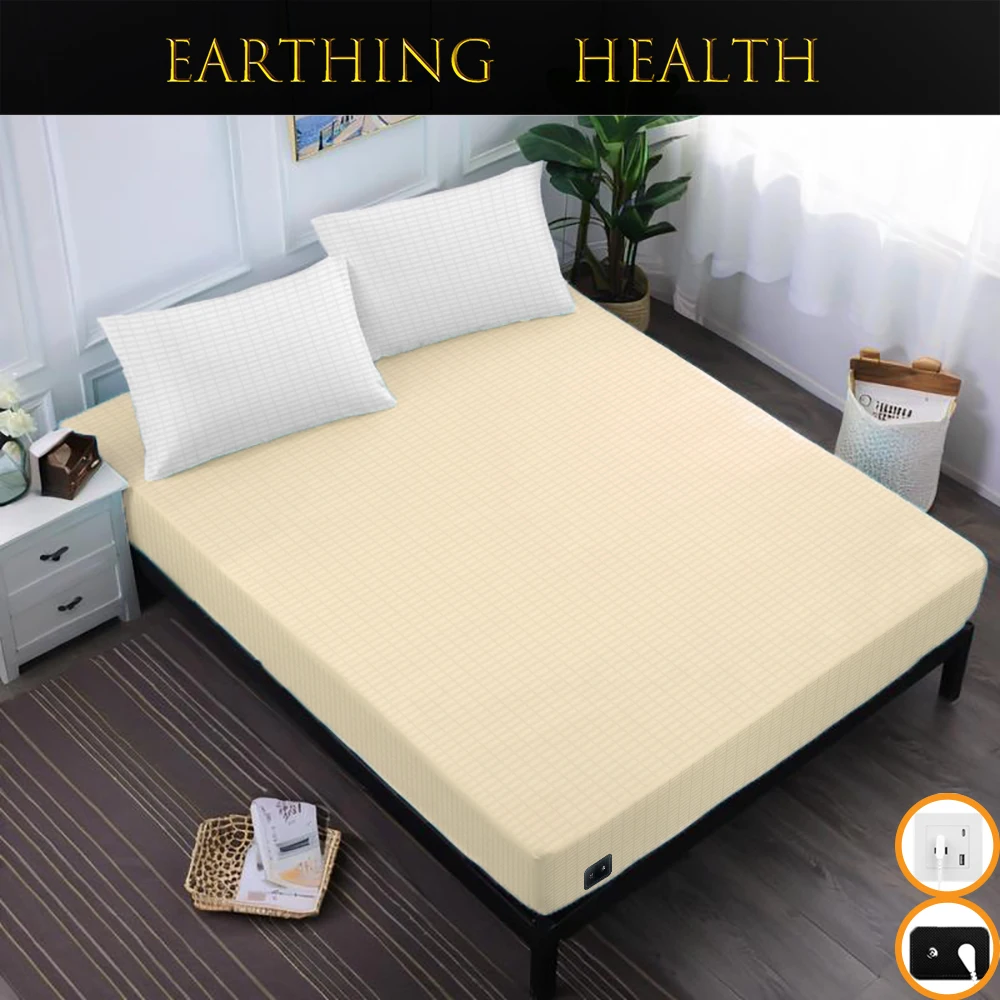
Selecting the Right Mattress Protection for Silk Sheets
Choosing appropriate mattress protection enhances both the longevity of your silk bedding and your sleeping experience. When selecting protection layers for use with silk sheets, prioritize:
Natural, breathable materials that complement silk’s temperature-regulating properties. Organic cotton, bamboo, and wool protectors work particularly well.
Smooth surfaces that minimize friction with silk’s slippery texture. Avoid heavily textured protectors that can create unwanted grip points.
Waterproof options with breathable membranes that protect your mattress without trapping heat. Look for natural approaches to waterproofing rather than plastic-feeling barriers.
Creating subtle friction points helps keep silk fitted sheets in place despite their natural slipperiness. Consider mattress pads with slight texture or elastic anchor bands specifically designed for use with silk. Wool mattress toppers pair exceptionally well with silk bedding, enhancing temperature regulation while providing natural grip.
Core Silk Bedding Layering Techniques
Mastering the art of silk bedding layering requires understanding how these luxurious fabrics interact differently than conventional bedding materials. The classic silk bedding structure consists of four essential components: foundation protection, fitted sheet, flat sheet, and duvet or comforter.
Unlike cotton sheets that may grip each other naturally, silk layers tend to slide without proper arrangement. The classic layering approach follows this sequence:
- Begin with your prepared mattress foundation
- Apply a silk fitted sheet, carefully securing all corners
- Position the flat sheet with the luxurious side facing down (toward your body)
- Complete with a duvet and cover, properly secured to prevent shifting
The proper combination of silk sheets and duvets creates a cohesive sleep system where each layer complements the others. The smooth interaction between properly installed silk layers eliminates uncomfortable bunching and twisting common with improperly layered bedding.
Perfect Application of Silk Fitted Sheets
Achieving a smooth, secure fit with silk fitted sheets requires specific techniques that accommodate silk’s unique properties. Follow these steps for perfect application:
- Start with opposite corners when fitting the sheet over your mattress
- Use the palms of your hands rather than fingertips to avoid snagging
- Gently pull the sheet taut without stretching the fabric excessively
- Tuck any excess material neatly under the mattress
For deeper mattresses, queen size silk fitted sheets with extra-deep pockets ensure proper coverage without straining the fabric. If corners frequently pop up during the night, consider sheet suspenders specifically designed for silk—these invisible helpers maintain tension without damaging the delicate fabric.
To prevent slippage, smooth the entire surface of the fitted sheet, working from the center outward in all directions. This technique removes wrinkles while creating maximum contact between the sheet and mattress surface.
Mastering the Silk Flat Sheet Placement
The flat sheet layer demands particular attention in silk bedding arrangements. Unlike cotton flat sheets, silk requires precise positioning to prevent midnight bunching and slipping.
For perfect silk flat sheet placement:
- Position the sheet with the lustrous side facing down (this smoother side will rest against your skin)
- Align the top edge approximately 8-10 inches from the head of the mattress
- Create hospital corners at the foot of the bed by lifting the side of the sheet to form a 45-degree angle from the corner, tucking in the lower portion, then folding down and tucking the angled portion
- Leave the sides untucked above the midpoint of the mattress for easier entry and exit
The fold-over at the top of the bed should be precise and even, creating a clean line across the width of the mattress. When paired with a duvet, this fold provides a visually appealing frame while keeping the silk flat sheet properly positioned throughout the night.
For beds used by two people, consider using a slightly larger flat sheet size than your mattress requires. This provides extra material to accommodate movement without dislodging the sheet from its tucked position.
Silk Duvet Insertion and Arrangement Techniques
Working with silk duvets presents unique challenges due to the fabric’s slippery nature. The proper insertion technique prevents frustrating bunching and ensures even distribution of the filling throughout the cover.
The modified “burrito method” works exceptionally well for silk:
- Turn the duvet cover inside out
- Lay the inside-out cover flat with the opening at the foot of the bed
- Place the duvet on top, aligning all corners precisely
- Starting from the closed end, roll both the duvet and cover together toward the opening
- Invert the opening over the rolled bundle, then unroll toward the head of the bed
- Shake gently to distribute the duvet evenly
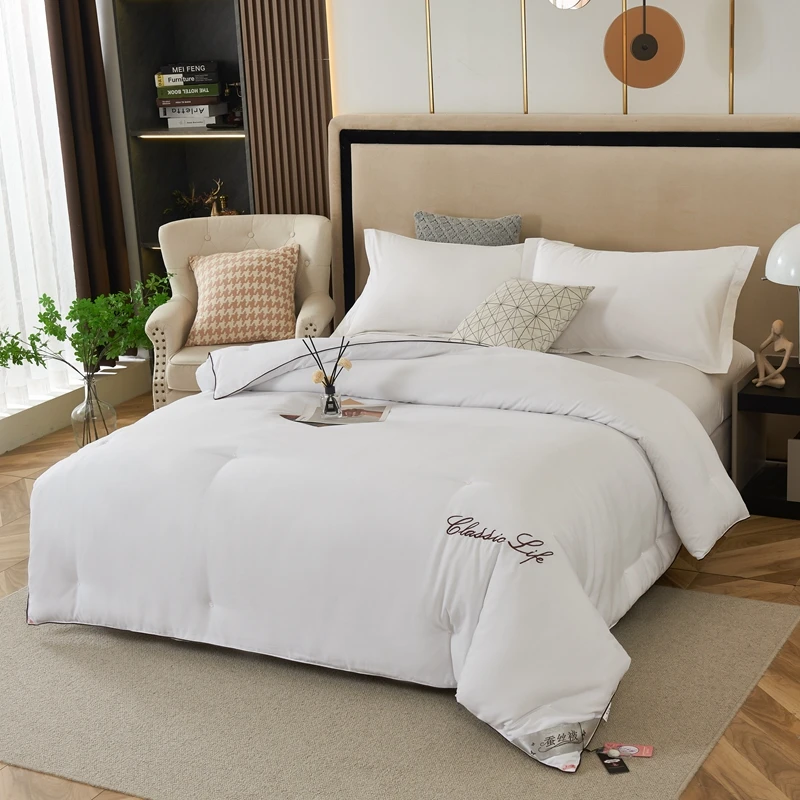
For keeping silk duvets properly positioned within their covers, interior corner ties work better than buttons for silk applications. If your duvet lacks corner attachments, consider adding silk ribbons to prevent shifting. Position the completed duvet so it hangs equally on both sides of the bed, with the foot end folded back slightly for a polished look.
Strategic Placement of Silk Pillowcases
Pillow arrangement contributes significantly to both the comfort and visual appeal of silk bedding. When working with silk pillowcases, consider these strategic placement techniques:
- Position sleeping pillows in silk cases at the head of the bed, partially tucked under the duvet fold for security
- Layer decorative pillows in front, arranging from largest to smallest
- For standard queen beds, use 2-4 sleeping pillows and 3-5 decorative pillows
- Create visual interest through varied pillow shapes while maintaining color harmony
To prevent silk pillowcases from slipping off during the night, select cases with envelope closures or hidden zippers. For maximum benefit, ensure sleeping pillows maintain direct contact with your face and hair to receive silk’s skin and hair benefits.
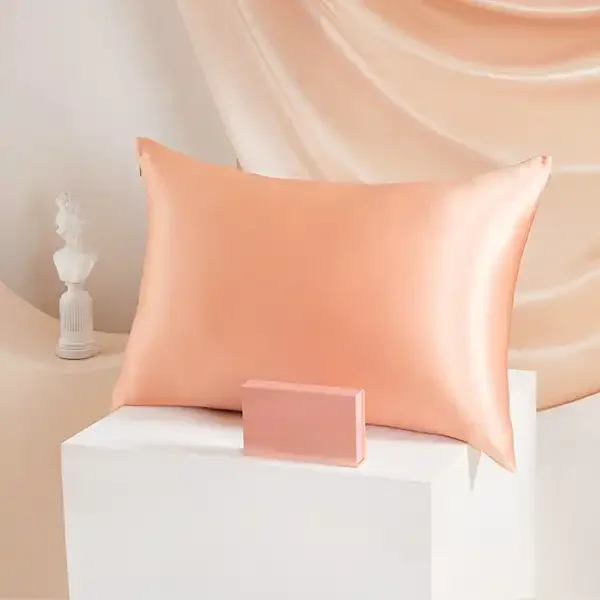
Seasonal Silk Bedding Layering Strategies
One of silk’s most remarkable qualities is its adaptability across seasons. With strategic layering adjustments, silk bedding can provide optimal comfort throughout the year without sacrificing luxury or aesthetic appeal.
Seasonal adjustments focus primarily on:
– Varying the weight and type of silk used for different temperature conditions
– Adding or removing supplementary layers while maintaining a silk base
– Adjusting the position and tightness of layers based on desired warmth
– Leveraging silk’s natural temperature-regulating properties for transitional seasons
Spring and fall represent transitional periods when silk’s adaptability truly shines. During these seasons, maintain your core silk sheets while adjusting only the weight of your duvet and any supplementary layers. This approach allows you to respond quickly to temperature fluctuations without a complete bedding overhaul.
Summer Silk Layering: Maximizing Cooling Properties
During warmer months, silk bedding provides natural cooling through moisture-wicking and breathability. To enhance these properties through strategic layering:
- Select lighter weight silk sheets (19 momme) for maximum breathability
- Use only a fitted sheet and flat sheet on especially warm nights
- Consider a silk coverlet instead of a full duvet
- Fold the duvet at the foot of the bed for easy access on cooler nights
- Position layers loosely rather than tucking tightly for improved air circulation
Cooling silk sheets with enhanced breathability make excellent summer options. Some manufacturers offer silk specifically processed to maximize cooling properties through looser weaves and specialized finishing techniques.
When selecting summer silk layers, lighter colors reflect heat rather than absorbing it, enhancing the natural cooling properties of the fabric. White, ivory, and pale blue silk bedding provides both visual freshness and practical temperature benefits during hot weather.
Winter Silk Layering: Balancing Warmth and Breathability
Cold weather layering requires thoughtful adaptation of your silk bedding system. The goal is adding warmth while preserving silk’s breathability advantages.
For optimal winter silk layering:
- Choose higher momme weight silk sheets (22-25 momme) for greater insulation
- Add a lightweight wool or cashmere blanket between your flat sheet and duvet
- Select a winter-weight silk-filled duvet with higher tog rating
- Consider flannel or jersey sheets under silk for extreme cold
- Maintain proper room humidity to enhance silk’s insulating properties
Using silk sheets in winter creates a microclimate that regulates temperature throughout the night. Unlike synthetic materials that can cause overheating, silk adapts to your body’s changing needs, providing consistent comfort.
For maximum winter warmth without sacrificing silk’s benefits, layer a thin non-silk thermal blanket between your silk flat sheet and duvet. This creates a thermal barrier while keeping silk in direct contact with your skin.
Complementary Fabrics for Enhanced Silk Bedding Layers
While pure silk bedding offers unmatched luxury, thoughtfully incorporating complementary fabrics can enhance both comfort and aesthetic appeal. The key is selecting materials that work harmoniously with silk’s unique properties rather than counteracting them.
Natural fibers generally pair best with silk bedding, preserving breathability while adding textural interest:
- Linen: Adds casual texture while maintaining excellent breathability; works well as a secondary sheet layer or lightweight summer blanket
- Egyptian cotton: Provides slightly more structure than silk; excellent for creating defined edges in layered bedding
- Cashmere: Offers exceptional warmth without bulk; ideal as a winter mid-layer between silk sheets and duvet
- Alpaca: Provides hypoallergenic warmth similar to wool but with a smoother hand-feel
Understanding the differences between natural silk and alternative fabrics helps in creating effective layering combinations. The placement of non-silk layers matters significantly—keep silk as the skin-contact layer whenever possible to maintain its health and beauty benefits.
California King Silk Fitted Sheet, King Size Silk Fitted Sheet, Mulberry Silk Fitted Sheet, Queen Size Silk Fitted Sheet
Price range: $120.04 through $390.79 Select options This product has multiple variants. The options may be chosen on the product page100% Silk Sheets, Green Silk Sheets, King Size Silk Bedding Set, Mulberry Silk Bedding Sets, Queen Size Silk Bedding Set
Price range: $1,246.21 through $1,615.22 Select options This product has multiple variants. The options may be chosen on the product pageEucalyptus Silk Bedding Sets, Eucalyptus Silk Sheets
Price range: $360.24 through $393.60 Select options This product has multiple variants. The options may be chosen on the product pageFull Silk Bedding Set, King Size Silk Bedding Set
Price range: $120.99 through $190.49 Select options This product has multiple variants. The options may be chosen on the product pageGrey Silk Sheets, Silk Sheet and Pillowcase Set
Price range: $88.20 through $146.64 Select options This product has multiple variants. The options may be chosen on the product page- Price range: $267.82 through $306.55 Select options This product has multiple variants. The options may be chosen on the product page
Creating Texture Contrast with Silk Bedding
Balancing silk’s natural smoothness with complementary textures creates visual and tactile interest while enhancing comfort. The contrast between different textures makes each element more distinctive and appealing.
Effective texture combinations include:
- Smooth silk sheets with a lightly textured cotton or linen duvet cover
- Silk pillowcases paired with chunky knit or velvet decorative pillows
- A cashmere or wool throw blanket draped across the foot of a silk-dressed bed
- Quilted cotton coverlet between silk sheets and a silk duvet
When incorporating textural contrast, maintain harmony by limiting the palette to 2-3 complementary colors. This creates cohesion while allowing textural differences to take center stage.
The Art of Styling Silk Bedding Layers
Beyond practical comfort, silk bedding presents extraordinary styling opportunities. The fabric’s natural luminosity catches and reflects light in ways other materials cannot, creating visual depth and dimension in your bedroom design.
Creating a cohesive silk bedding presentation involves:
- Developing a color palette that enhances silk’s natural sheen
- Understanding how light interacts with different silk weaves and colors
- Creating visual layers that draw the eye from the foundation to decorative elements
- Balancing simplicity and opulence based on your personal aesthetic
The bedroom decor ideas featuring silk bedding showcase how these luxurious fabrics can transform an ordinary space into an extraordinary retreat. When styling silk bedding, embrace its natural drape by allowing subtle folds and gentle waves rather than forcing rigid, perfectly straight lines.
Achieving the Luxury Hotel Look with Silk Layers
The coveted “luxury hotel bed” aesthetic represents the pinnacle of bedding presentation. With silk, this look becomes even more sumptuous while remaining achievable at home.
To create hotel-quality silk bedding:
- Start with perfectly smooth foundation layers
- Create precise, symmetrical folds with the top sheet turned down approximately 15 inches from the head of the bed
- Position the duvet with equal overhang on three sides (slightly more at the foot)
- Implement the “pillow hierarchy” with sleeping pillows at the back, followed by Euro shams, standard decorative pillows, and finally accent pillows
- Add a precisely folded throw at the foot of the bed for the finishing touch
The visual power comes from the contrast between crisp, straight edges and the gentle drape of silk. Focus particular attention on corners and folds, as these details differentiate amateur from professional-looking beds.
Maintaining Perfect Silk Layers: Care and Preservation
Proper maintenance ensures your silk bedding layers retain their luxury and performance for years to come. Unlike conventional bedding, silk requires specific care techniques to preserve its unique properties.
For washing silk bedding:
– Use mild, pH-neutral detergents specifically formulated for silk
– Wash in cold water (never above 30°C/86°F) on the gentlest cycle
– Avoid biological detergents containing enzymes that damage silk fibers
– Skip fabric softeners, which coat fibers and reduce silk’s natural properties
For optimal freshness and longevity, change silk pillowcases weekly, sheets every 1-2 weeks, and duvet covers monthly. When storing seasonal silk bedding, avoid plastic containers that trap moisture and encourage mildew. Instead, use cotton storage bags that allow the fabric to breathe while protecting from dust and light exposure.
These care practices help maintain the advantages of sleeping on Mulberry silk, including its hypoallergenic properties and luxurious feel, throughout the life of your bedding.
Troubleshooting Common Silk Layering Challenges
Even experienced silk enthusiasts occasionally encounter challenges with this unique bedding material. Understanding common issues and their solutions ensures continuous enjoyment of your silk layers.
Slippery Silk Solutions
Problem: Silk sheets constantly slide off the mattress during the night
Solution: Use sheet suspenders or straps specifically designed for silk, or select fitted sheets with extra-deep pockets and strong elastic. A slightly textured mattress pad can also provide grip.
Wrinkle Management
Problem: Silk bedding develops noticeable wrinkles despite careful making
Solution: Lightly mist sheets with distilled water before smoothing by hand, or use a steamer held at least 6 inches from the fabric. Never iron directly on silk bedding.
Static Control
Problem: Silk layers cling together due to static electricity
Solution: Maintain proper humidity in your bedroom (40-60%) and use a silk-safe anti-static spray. Avoid combining silk with highly synthetic fabrics that increase static buildup.
Duvet Distribution
Problem: Duvet filling bunches unevenly inside silk cover
Solution: Use a duvet with baffle box construction to prevent filling migration, and attach the duvet to the cover at multiple points beyond just the corners.
Is Silk Layering Worth the Extra Care?
Considering the additional attention silk bedding requires, many wonder if the benefits justify the effort. The value proposition becomes clear when examining the complete picture:
- Longevity: Properly maintained silk bedding often outlasts cotton alternatives, providing better long-term value despite higher initial cost
- Sleep quality: Many users report deeper, more comfortable sleep due to silk’s temperature regulation and smooth texture
- Skin and hair benefits: Reduced friction means less bedhead and fewer sleep wrinkles over time
- Allergen resistance: Silk naturally resists dust mites and mold, creating a healthier sleep environment
For those with sensitive skin, temperature regulation issues, or appreciation for sustainable luxury, silk layering delivers benefits that far outweigh the maintenance requirements. The key is establishing proper care routines from the beginning, making silk maintenance a natural part of your bedroom upkeep.
Advanced Silk Layering for Special Circumstances
Beyond standard bedding arrangements, silk layering can be adapted to address specific needs and situations. These specialized approaches maximize silk’s beneficial properties for particular contexts.
For allergy sufferers, creating a fully hypoallergenic silk sanctuary involves using silk-filled pillows and duvets alongside silk sheets. This comprehensive approach minimizes exposure to common allergens while maintaining luxury and comfort.
In guest rooms, consider a base layer of silk sheets topped with cotton or linen layers that can be easily adjusted by guests according to their temperature preferences. This versatile approach ensures visitor comfort while protecting your silk investment.
For smaller spaces, focus on multi-functional silk pieces like reversible duvet covers or silk/cotton blend sheets that offer silk benefits with slightly easier care. These space-efficient options deliver luxury without requiring extensive storage for seasonal changes.
Can Vegan Alternatives Achieve the Same Layering Benefits?
For those preferring animal-free bedding options, plant-based silk alternatives have improved dramatically in recent years. Modern vegan silk bedding offers many similar benefits to traditional silk while aligning with plant-based values.
These alternatives, typically made from bamboo, soy protein fiber, or other plant derivatives, exhibit impressive properties:
– Comparable smoothness and drape to traditional silk
– Good temperature regulation (though typically less efficient than true silk)
– Excellent moisture-wicking capabilities
– Lower environmental impact in some production methods
When layering vegan silk alternatives, similar principles apply, though slight adjustments help maximize performance. Vegan silk alternatives often benefit from more frequent washing than traditional silk, and may require different care products to maintain their properties.
The best vegan silk alternatives for bedding maintain the essential smooth texture that makes traditional silk so beneficial for skin and hair. When selecting these alternatives, prioritize options with minimal chemical processing to preserve their natural benefits.

